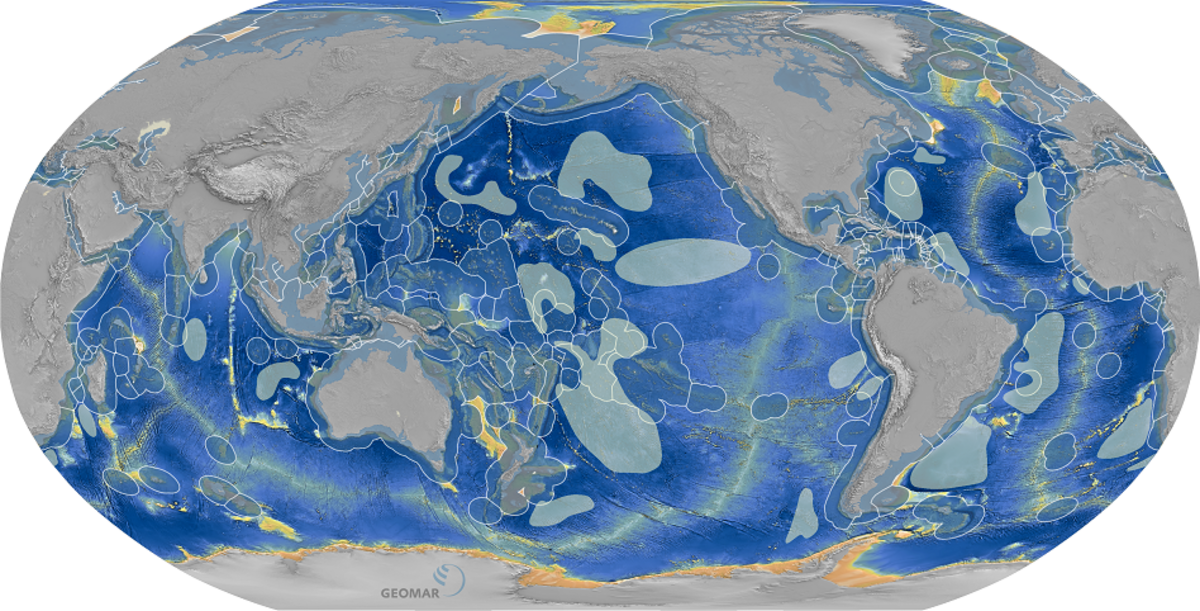Manganese nodules occur widely on the vast, sediment-covered abyssal plains at depths of about 4,000–6,500 m (see Figure below). They are mineral concretions made up largely of manganese and iron that form around a hard nucleus and incorporate metals from the sediment and seawater. As manganese nodules form directly on the seafloor, these deposits can be regarded as a 2-dimensional resource. The greatest concentrations of metal-rich nodules occur in the Clarion-Clipperton Zone (CCZ), which extends from Hawaii to Mexico. A conservative calculation for the CCZ suggests that there are about 21,100 million dry metric tons of nodules in this region alone. Nodules are also concentrated in the Peru Basin, near the Cook Islands, and at abyssal depths in the Indian and Atlantic Oceans. Manganese and iron are the principal metals in polymetallic nodules, but the metals of greatest economic interest are nickel, copper, and cobalt that combined can reach between 2.5 and 3 wt%. In addition, there are enrichments of other valuable metals, such as molybdenum, vanadium, titanium, the rare earth elements (REE), and lithium, that have industrial importance in many high-tech and greentech applications and can possibly be recovered as by-products once appropriate processing techniques are developed. Mining technology is currently being developed in many countries and by commercial companies.
As of Mid 2023, the International Seabed Authority (ISA) has approved 19 contracts for exploration, mainly in the CCZ and one contract each in the Indian Ocean and the western Pacific.
For a complete list of exploration contracts from ISA see here.




